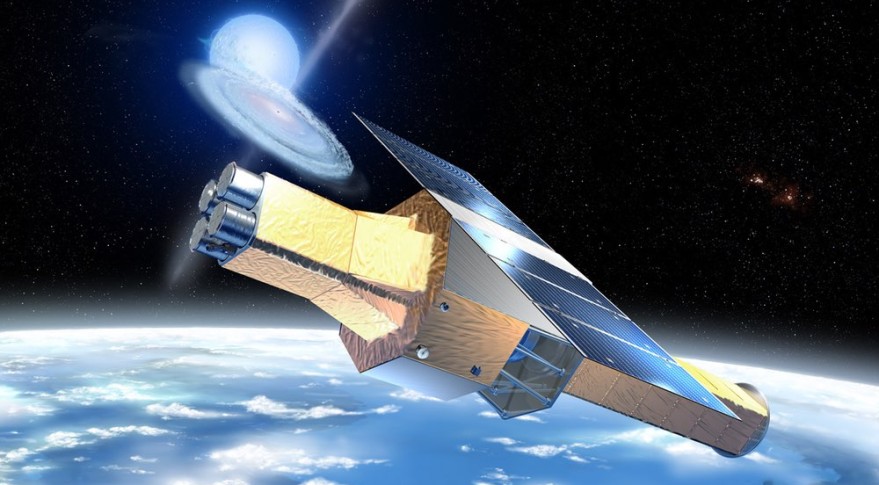
Artist’s illustration of Japan’s Hitomi X-ray astronomy satellite in orbit. Hitomi suffered an anomaly in late March 2016, and its handlers have given up on trying to save the spacecraft.
Credit: JAXA/Akihiro Ikeshita
WASHINGTON — The Japan Aerospace Exploration Agency (JAXA) announced April 28 that it was giving up on efforts to restore control of its Hitomi astronomy satellite , concluding that the spacecraft was too severely damaged in an incident last month.
In a statement, JAXA said that the anomaly that caused the spacecraft to spin up last month likely caused its two solar panels to snap off , preventing the spacecraft from generating power. The agency added that it had received unspecified information from “several overseas organizations” that also concluded that Hitomi’s solar panels had separated.
“Considering this information, we have determined that we cannot restore the ASTRO-H’s functions,” JAXA stated, using the name assigned to Hitomi prior to its February 17 launch. [Tumbling Hitomi Spotted by Amateur Astronomer (Video) ]
JAXA lost contact with the satellite on March 26 during a routine maneuver to reorient the spacecraft to look at a different region of the sky. The agency was initially cautiously optimistic about restoring control of the spacecraft, stating it had received three brief signals in the days after the anomaly believed to have come from the spacecraft.
However, in its April 28 statement, JAXA said it concluded the signals it detected were not from Hitomi at all because they were not at the wrong frequencies.
“JAXA will cease the efforts to restore ASTRO-H and will focus on the investigation of anomaly causes,” the agency stated . “We will carefully review all phases from design, manufacturing, verification, and operations to identify the causes that may have led to this anomaly, including background factors.”
According to an April 15 briefing posted on the JAXA website, investigators believe a chain of errors with the spacecraft’s attitude control system caused the spacecraft to spin up enough for the solar panels and other components to break off.
The problem started when Hitomi’s attitude control system determined the spacecraft was rotating after a planned maneuver, when in fact it was not. That system activated a reaction wheel to stop the phantom spin, which created a real spin.
That spin saturated the reaction wheel, triggering a “safe hold” mode in the spacecraft. The spacecraft fired thrusters in its reaction control system to halt the spin, but an incorrect control parameter in that system instead caused the spacecraft to spin even faster. Investigators believe that spacecraft controllers updated the parameter to reflect a different spacecraft configuration after the deployment of an instrument boom, but may have done so incorrectly.
The loss of Hitomi is a setback not just for JAXA, but also for several other space agencies. The X-ray astronomy satellite included contributions from NASA, the European Space Agency and the Canadian Space Agency, including an X-ray instrument developed at NASA’s Goddard Space Flight Center. For X-ray astronomers, Hitomi was one of the biggest missions this decade.
“JAXA expresses the deepest regret for the fact that we had to discontinue the operations of ASTRO-H,” the agency said in its statement, “and extends our most sincere apologies to everyone who has supported ASTRO-H believing in the excellent results ASTRO-H would bring, to all overseas and domestic partners including NASA, and to all foreign and Japanese astrophysicists who were planning to use the observational results from ASTRO-H for their studies.”
This story was provided by SpaceNews , dedicated to covering all aspects of the space industry.

Comments are closed.